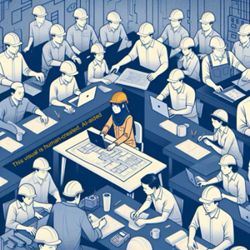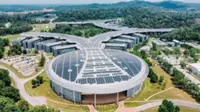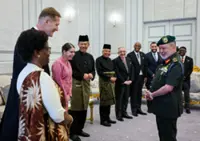
More than just greenery: The mangrove forest acts as an important buffer zone between the riverbank and Kampung Dato’ Hormat.
SABAK BERNAM: Mangrove rehabilitation is nothing new for the people of Kampung Dato’ Hormat here, having been involved in it since 2012 as they have a mangrove forest in their backyard. Located about 300m from the village, the forest lies on the fringes of Sungai Bernam.
Recently, the villagers gathered to hear a briefing on the village’s mangrove replanting programme organised by the Global Environmental Centre (GEC) and Yayasan Petronas.
It was an important event as for these villagers, the mangrove forest acts as an important buffer zone between the riverbank and their village, protecting it against storms and floods. Not only that, it is also a source of livelihood for them as many of them fish there to supplement their income.
Kampung Dato’ Hormat has a population of 350 with most of the people involved in farming and fishing activities, according to Bernama in an article to commemorate International Day for the Conservation of the Mangrove Ecosystem today.
According to Friends of Kampung Dato’ Hormat Mangrove Forest (FKDHMF) chairman Mohammad Omar Muslim, since 2006, over 20ha of mangroves behind their village have been destroyed due to unsustainable aquaculture activities.“The activities also resulted in the mangrove swamp lacking in moisture and water, which affected the marine resources, and there was less fish for us to catch.
“We also started worrying that the (depleting) mangroves will no longer be able to protect us against the floods during the monsoon season,” he said, adding that efforts to rehabilitate and manage the area’s mangrove ecosystem began following the forming of FKDHMF in 2012, in collaboration with GEC, Selangor Forestry Department, Sabak Bernam Irrigation and Drainage office and the local council.
About 20 residents of Kampung Dato’ Hormat are members of FKDHMF. He added that as of now, a total of 42,600 mangrove trees have been replanted in the area’s 21ha mangrove forest.
Mohammad Omar also said that FKDHMF members have been able to generate a side income for themselves as well as funds for the rehabilitation and conservation of their mangrove forest by collaborating with corporate companies in their tree-planting endeavours to earn carbon credits.“For example, we have been working with Yayasan Petronas (the social impact arm of national oil company PETRONAS) through GEC since 2021 to get funds for the restoration of our mangrove swamp. Not only that, with their help, we were also able to open a nursery (for mangrove saplings) located not far from our kampung. We sell the saplings to other companies for their tree-planting efforts,” he said, adding that the nursery is 65sqm in size and has about 15,000 saplings.
(Tree-planting activities under the Greening Malaysia Programme are carried out by companies and other entities to generate carbon credits that can be auctioned on Bursa Carbon Exchange or BCX, Malaysia’s first government-backed voluntary carbon market exchange.)
Meanwhile, GEC forest and coastal programme manager Nagarajan Rengasamy, who is also an FKDHMF facilitator, said that although its members have their own commitments to attend to every day, they are tasked with ensuring the healthy growth of the replanted mangrove trees as well as the saplings in the nursery.
GEC programme technical assistant Muhammad Syafiq Abdullah said mangrove trees help to absorb greenhouse gases like carbon dioxide and convert it to clean oxygen.
“And, mangrove forests are capable of absorbing five times more atmospheric carbon than tropical forests,” he said.
Meanwhile, GEC director Faizal Parish said that apart from involving the local communities, conservation activities also need to be complemented with options for sustainable livelihoods which can maintain the interest of the community.
Yayasan Petronas chief executive officer Shariah Nelly Francis agreed, saying that tree-planting and forest restoration programmes should involve working together with local communities as they are more knowledgeable and experienced in agricultural activities.








































